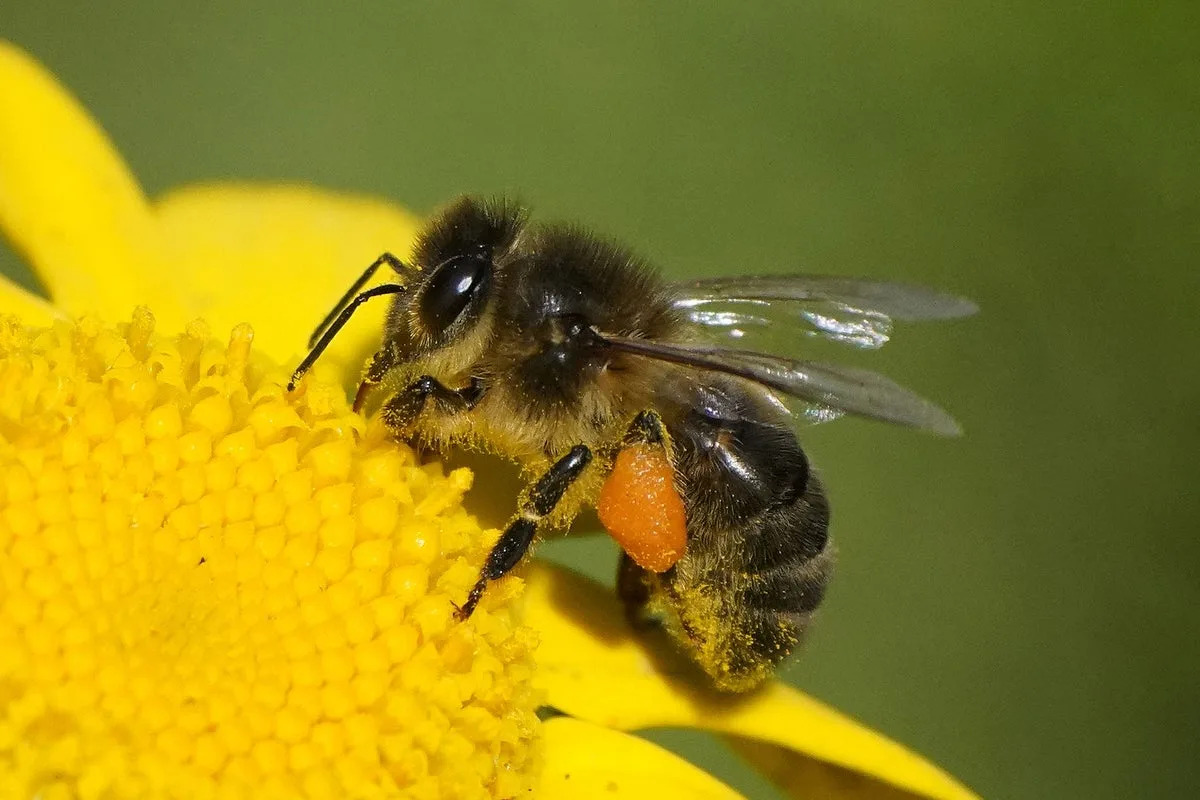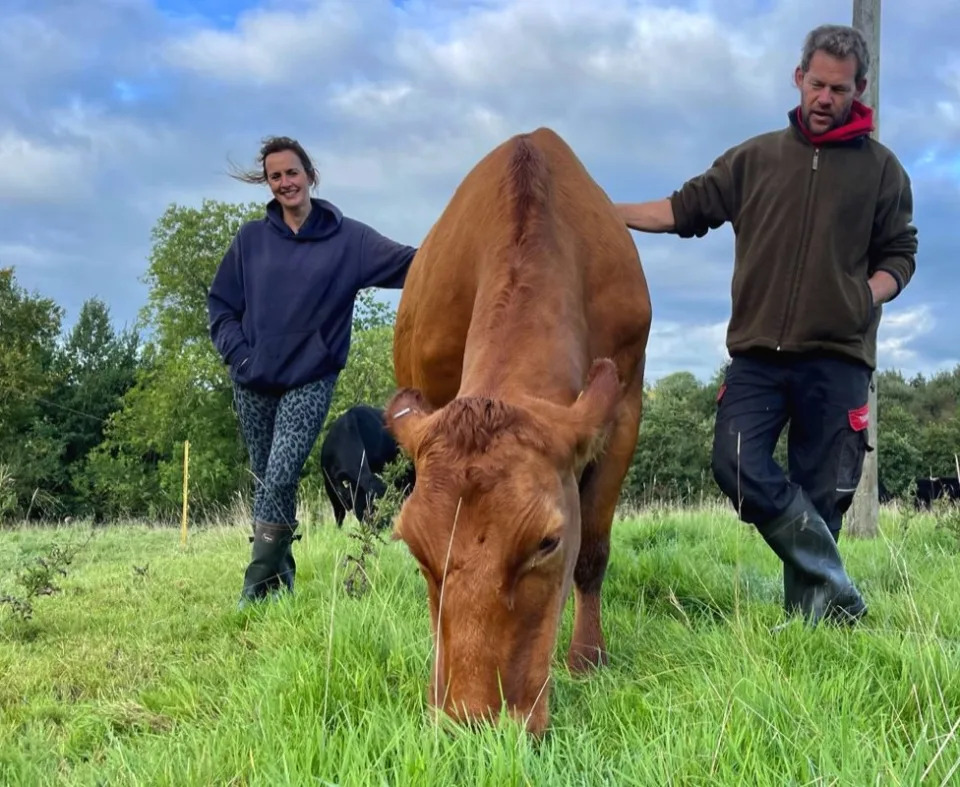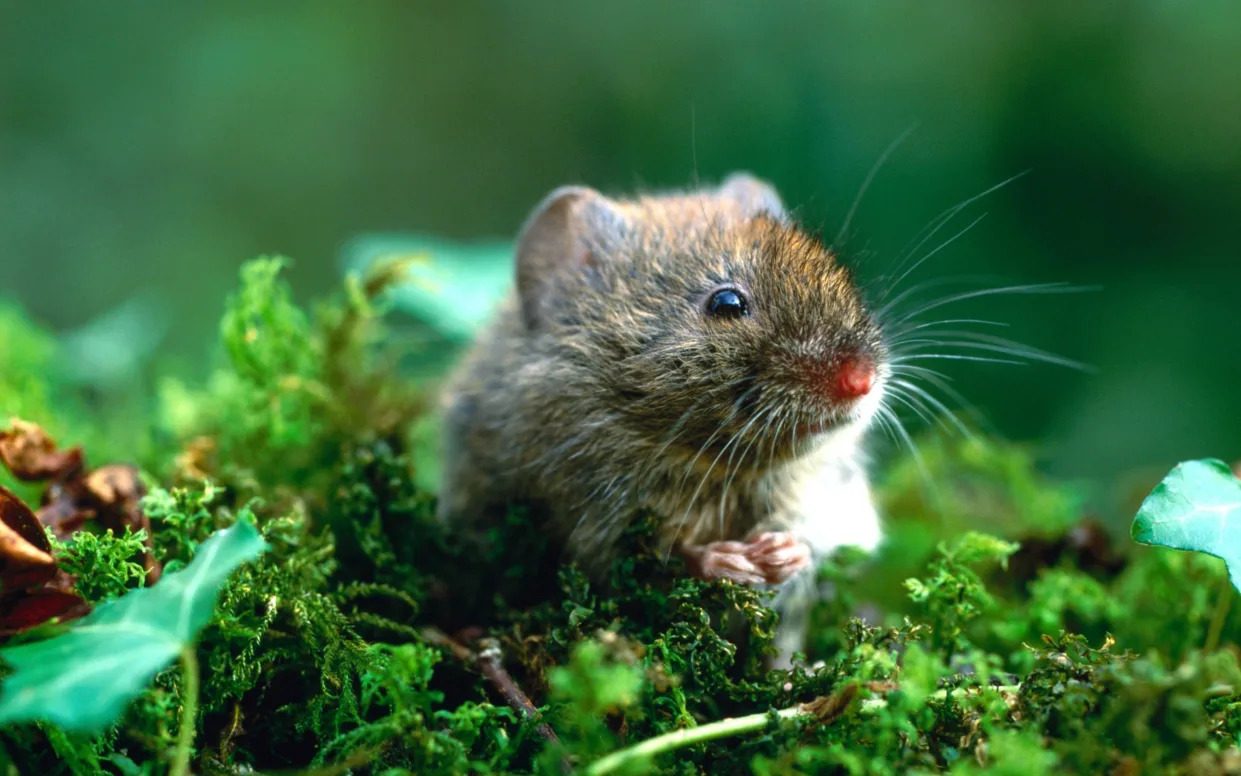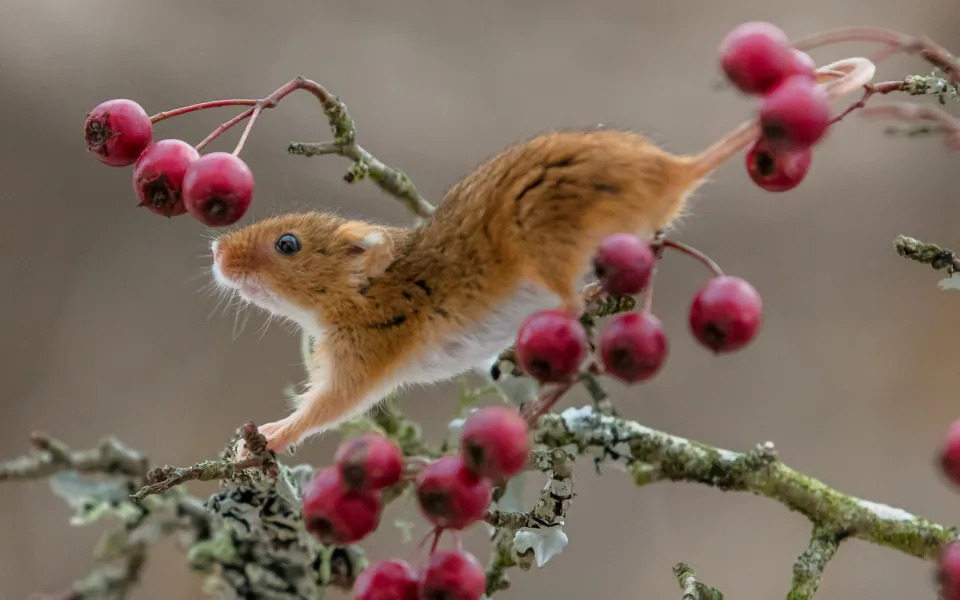UK wildlife ‘continues to decline and degrade’ with one in six species at risk of extinction
Stuti Mishra
Thu, September 28, 2023

The UK’s wildlife “continues to decline and degrade” as one in six species are at risk of extinction, according to the latest State Of Nature report.
Nearly half of its bird species are threatened while almost a third of amphibians, reptiles, fungi, lichen and a quarter of land-living mammals are at risk of vanishing, said the 203-page report released on Wednesday.
It found that 16 per cent of species, or one in six, were at risk of extinction. This includes the UK’s iconic wildlife species such as the turtle dove and hazel dormouse.
More than 10,000 species and the state of the habitats vital for their survival were assessed in the report led by the RSPB and backed by over 60 research and conservation organisations.
More than half of the flowering plant species no longer grow where they used to, with the climate crisis and intensive farming being the biggest reasons why the UK has seen an average decline of all living species of 19 per cent since monitoring began in 1970.
The UK’s wildlife has been depleted by centuries of habitat destruction, unsustainable farming practices and persecution.
This means more than half of the UK’s plant, fungal and animal life has been killed off.
The State of Nature report is a stark reminder that politicians must not let nature drop down the agenda – there is far too much at stake.
Craig Bennett, chief executive of The Wildlife Trusts
The report also found only one in seven (14 per cent) habitats considered important for wildlife, were in a good ecological condition – including just 7 per cent of woodlands. Due to habitat damage from fishing gear, none of the areas of seafloor around the UK were found to be in a good condition.
“The latest State of Nature Report marks a decade of missed opportunities to halt the spiralling decline of UK wildlife,” said professor Rick Stafford, chair of the British Ecological Society’s Policy Committee.
“While we are perhaps becoming inured to these declines, the statistic that none of the seabed around our island nations is in good condition still has the power to shock.”
“Continuous trawling of a seabed has parallels to the effect of an earthquake on a city – habitats are destroyed and species are displaced.”
“The good news is that, unlike terrestrial habitats, it is easy to fix; just leave it alone and it will recover. The bad news is that, on paper, the UK is already hitting its 30x30 targets for marine protection. Clearly this is not working.”
Only 25 per cent of peatland, also an important natural carbon sink, and 50 per cent of salt marshes, remain in good condition.
Prof Mathews said small mammals such as harvest mice and field voles are “disappearing before our eyes” because the habitat on which their survival depends is being destroyed, with knock-on effects for owls and other predators.
Lichens – which are a mix of fungi and algae and thrive in clean, wet, undisturbed forests – are growing in a psychedelic mix of patterns and colours on tree branches, but have recovered somewhat since the 1970s thanks to reductions in sulphur dioxide emitted by industry.
Nearly half of lichen species are, however, still declining because of ammonia, which mostly comes from muck-spreading, slurry and fertilisers used on farms.
Insects that pollinate and those that prey on pests such as ladybirds, ground beetles and wasps are also disappearing in certain areas – falling by 18 per cent and 34 per cent respectively.
“The sobering message is that the state of UK nature and the wider environment, based upon the indices that we’ve got, continues to decline and degrade,” said professor Richard Gregory, the RSPB’s head of monitoring conservation science.
“At the same time, we’ve never actually had such a good understanding of the state of nature in the United Kingdom and we’ve never had such a good understanding of how we might fix it.”
We know that creating bigger, better, more joined-up spaces for wildlife can bring practical results, including more ponds, wetlands and shrubby wild habitats
Tony Juniper, Natural England chairperson
Dr Francesca Mancini, of the UK Centre for Ecology and Hydrology, warned that these losses could damage farmers financially.
“We can think that further losses in pest control species for example could lead to economic losses for farmers and also a greater reliance on chemical pesticides, which then in turn is going to have more consequences for biodiversity,” she said.
Some species, such as dragonflies, have improved thanks to rivers being cleaner than they were in the 1970s, while conservation projects from the Cairngorms to Cambridgeshire and Lyme Bay, showed restoration can and does help plants and animals to return.
“We know that creating bigger, better, more joined-up spaces for wildlife can bring practical results, including more ponds, wetlands and shrubby wild habitats,” Natural England chairperson Tony Juniper said.
“The truth is though that on its own this will not be enough, with every sector of society needing to play a role if we are to recover species abundance and reduce the risk of extinction, as the Government has legally committed to doing,” he said.
The authors of the report called on the UK government to deliver on its promise to protect at least 30 per cent of land and sea for nature, according to a landmark treaty signed last year.
“The State of Nature report is a stark reminder that politicians must not let nature drop down the agenda – there is far too much at stake,” said Craig Bennett, chief executive of The Wildlife Trusts.
“This next parliament will be the most important in my lifetime for nature and climate action. The clock is ticking towards the 2030 deadline by which point the UK Government has committed to protect at least 30 per cent of land and sea for nature and to halve the risks posed by pesticides.”
Additional reporting by PA
Nature crisis: One in six species at risk of extinction in Great Britain
Thu, September 28, 2023

The UK’s wildlife “continues to decline and degrade” as one in six species are at risk of extinction, according to the latest State Of Nature report.
Nearly half of its bird species are threatened while almost a third of amphibians, reptiles, fungi, lichen and a quarter of land-living mammals are at risk of vanishing, said the 203-page report released on Wednesday.
It found that 16 per cent of species, or one in six, were at risk of extinction. This includes the UK’s iconic wildlife species such as the turtle dove and hazel dormouse.
More than 10,000 species and the state of the habitats vital for their survival were assessed in the report led by the RSPB and backed by over 60 research and conservation organisations.
More than half of the flowering plant species no longer grow where they used to, with the climate crisis and intensive farming being the biggest reasons why the UK has seen an average decline of all living species of 19 per cent since monitoring began in 1970.
The UK’s wildlife has been depleted by centuries of habitat destruction, unsustainable farming practices and persecution.
This means more than half of the UK’s plant, fungal and animal life has been killed off.
The State of Nature report is a stark reminder that politicians must not let nature drop down the agenda – there is far too much at stake.
Craig Bennett, chief executive of The Wildlife Trusts
The report also found only one in seven (14 per cent) habitats considered important for wildlife, were in a good ecological condition – including just 7 per cent of woodlands. Due to habitat damage from fishing gear, none of the areas of seafloor around the UK were found to be in a good condition.
“The latest State of Nature Report marks a decade of missed opportunities to halt the spiralling decline of UK wildlife,” said professor Rick Stafford, chair of the British Ecological Society’s Policy Committee.
“While we are perhaps becoming inured to these declines, the statistic that none of the seabed around our island nations is in good condition still has the power to shock.”
“Continuous trawling of a seabed has parallels to the effect of an earthquake on a city – habitats are destroyed and species are displaced.”
“The good news is that, unlike terrestrial habitats, it is easy to fix; just leave it alone and it will recover. The bad news is that, on paper, the UK is already hitting its 30x30 targets for marine protection. Clearly this is not working.”
Only 25 per cent of peatland, also an important natural carbon sink, and 50 per cent of salt marshes, remain in good condition.
Prof Mathews said small mammals such as harvest mice and field voles are “disappearing before our eyes” because the habitat on which their survival depends is being destroyed, with knock-on effects for owls and other predators.
Lichens – which are a mix of fungi and algae and thrive in clean, wet, undisturbed forests – are growing in a psychedelic mix of patterns and colours on tree branches, but have recovered somewhat since the 1970s thanks to reductions in sulphur dioxide emitted by industry.
Nearly half of lichen species are, however, still declining because of ammonia, which mostly comes from muck-spreading, slurry and fertilisers used on farms.
Insects that pollinate and those that prey on pests such as ladybirds, ground beetles and wasps are also disappearing in certain areas – falling by 18 per cent and 34 per cent respectively.
“The sobering message is that the state of UK nature and the wider environment, based upon the indices that we’ve got, continues to decline and degrade,” said professor Richard Gregory, the RSPB’s head of monitoring conservation science.
“At the same time, we’ve never actually had such a good understanding of the state of nature in the United Kingdom and we’ve never had such a good understanding of how we might fix it.”
We know that creating bigger, better, more joined-up spaces for wildlife can bring practical results, including more ponds, wetlands and shrubby wild habitats
Tony Juniper, Natural England chairperson
Dr Francesca Mancini, of the UK Centre for Ecology and Hydrology, warned that these losses could damage farmers financially.
“We can think that further losses in pest control species for example could lead to economic losses for farmers and also a greater reliance on chemical pesticides, which then in turn is going to have more consequences for biodiversity,” she said.
Some species, such as dragonflies, have improved thanks to rivers being cleaner than they were in the 1970s, while conservation projects from the Cairngorms to Cambridgeshire and Lyme Bay, showed restoration can and does help plants and animals to return.
“We know that creating bigger, better, more joined-up spaces for wildlife can bring practical results, including more ponds, wetlands and shrubby wild habitats,” Natural England chairperson Tony Juniper said.
“The truth is though that on its own this will not be enough, with every sector of society needing to play a role if we are to recover species abundance and reduce the risk of extinction, as the Government has legally committed to doing,” he said.
The authors of the report called on the UK government to deliver on its promise to protect at least 30 per cent of land and sea for nature, according to a landmark treaty signed last year.
“The State of Nature report is a stark reminder that politicians must not let nature drop down the agenda – there is far too much at stake,” said Craig Bennett, chief executive of The Wildlife Trusts.
“This next parliament will be the most important in my lifetime for nature and climate action. The clock is ticking towards the 2030 deadline by which point the UK Government has committed to protect at least 30 per cent of land and sea for nature and to halve the risks posed by pesticides.”
Additional reporting by PA
Nature crisis: One in six species at risk of extinction in Great Britain
Victoria Gill and Kate Stephens - Science team, BBC News
Thu, September 28, 2023 at 1:23 AM MDT·5 min read
Numbers of the UK's most precious animals and plants are still falling, as a countrywide nature-loss crisis continues.
Loss of nature is outpacing investment and effort to tackle it, conservation organisations say.
Their State of the Nature report found 16% of 10,000 mammals, plants, insects, birds and amphibians assessed were threatened.
They include UK wildlife icons such as the turtle dove and hazel dormouse.
The government has said it is committed to "increasing the amount of habitat for nature to thrive".
But conservation organisations say more investment and a shift to much more wildlife-friendly farming and fishing are urgently needed.
The 203-page document was produced by more than 60 organisations, including wildlife conservation groups, government agencies and academics.
Its analysis of decades of research paints a grim picture - natural spaces and the wildlife that depends on them are in decline.
What is biodiversity and how can we protect it?
Nida al-Fulaij, from the People's Trust for Endangered Species, told BBC News: "The main takeaways from this report are alarming."
And she explained how thousands of studies used in the report examined the abundance or distribution of UK wildlife.
'Bleak outlook'
"Where we can, we count species year after year," Ms Fulaij said.
"Another way to measure how a plant or animal is faring is to repeatedly examine a site and ask, 'Is the species here or not?'"
Plants and animals monitored since the 1970s have declined in abundance by an average 19%.
And this trend suggests a bleak outlook for much of the country's native wildlife, conservation scientists say.
This should make everyone "sit up and listen", Royal Society for the Protection of Birds (RSPB) chief executive Beccy Speight said.
Restoring nature would also help to tackle the climate crisis.
"We need to move far faster as a society towards nature-friendly land and sea use," Ms Speight said.
"Otherwise, the UK's nature and wider environment will continue to decline and degrade, with huge implications for our own way of life."
Responding to these calls for action, the government said it was investing in its "30-by-30" pledge, to protect 30% of land for nature by 2030.
"At the start of this year, I published our comprehensive Environmental Improvement Plan," Environment Secretary Therese Coffey said, "setting out how we will create and restore at least 500,000 hectares [2,000 sq miles] of new wildlife habitats."
The government also highlighted investments including:
a £40m Species Survival Fund
£750m for woodland and peatland restoration
But RSPB conservation-science head Prof Richard Gregory told BBC News: "We'd need more to achieve the goal of 30 by 30.
"The task ahead of us to recover nature in the UK is large and complex - we are really talking of billions of pounds and not millions to change systems and tackle the drives of decline.
"That investment would return a huge amount for society in time and save huge future costs if we allow the environment to continue to decline and degrade."
Since 1970, the report says, of the 2,890 species in Britain's "priority group":
58% fell in number
19% increased
Also:
Almost 1,500 UK native species of plants and animals are now threatened with extinction
Most of the important habitats for UK nature - including woodland, wetlands and wildflower meadows - are in poor condition
Only about 11% of UK land is within protected areas - and not all are well managed for nature and wildlife
None of the seafloor around the UK is in "good condition", because of damage from fishing gear
In the North Pennines, Nic and Paul Renison have transformed the way they farm, to create more space for nature, dividing their 400 acres (160 hectares) into small pastures and moving their cows into a new field each day.
"The idea is that it's like the buffalo on the plains - they move every day, then the pasture gets 60 days to recover," Nic said.
With the help of the Woodland Trust, they have also planted wildlife-friendly hedgerows to create wildlife "corridors" throughout their farm.
"The more you do, the more nature you attract - it gets addictive," Paul said.
All five of the UK's resident owl species can now be found on the Renisons' farm and 50 different bird species are breeding there, a recent survey revealed.

Nic and Paul Renison on their farm, in the North Pennines
In England, an estimated 70% of land is farmed.
And studies suggest nature-friendly farming can boost production.
In one large-scale study in central England, turning over land from crops to wildlife habitat increased yields, probably by boosting the abundance of insects that pollinate those crops.
But the Nature Friendly Farming Network said more investment would be needed "to support all farmers in restoring nature and acting on climate change".
But the report also found "targeted conservation", concerted efforts to restore habitats and protect species, had worked well:
The number of species in a marine protected area (MPA) in Lyme Bay, Devon, had significantly increased since trawling was banned, in 2008
600 sq km (150,000 acres) of the Cairngorms, in the Highlands, had been restored for woodland-dependent wildlife
The RSPB's Hope Farm, in Cambridgeshire, had provided a research and demonstration site, showing how crop yields could been increased along with bird numbers
Report author and University of Sussex environmental-biology professor Fiona Matthews said: "We need a lot more investment [in nature].
"There is a belief in government that things can just magically happen for free."
But while she acknowledged the great work from thousands of volunteers, funded work was needed too.
"I often see a press release for £1m for this or that - but it is a drop in the ocean for what is actually required to tackle this issue," Prof Matthews said.
Small mammals ‘disappearing before our eyes’, warns report
Emma Gatten
Thu, September 28, 2023

Field voles are in danger of extinction in UK - David Tipling/Getty
Harvest mice and field voles are “disappearing before our eyes”, warn the authors of a new report that finds one in six UK species are at risk of extinction.
Among those at greatest risk are harvest mice and field voles, which are particularly threatened by intensive agriculture, said authors of the latest State of Nature report.
Overall, all species have declined by 19 per cent since monitoring began in 1970, according to the latest State of Nature report.
Birds are at greatest risk, with more than 40 per cent threatened with extinction, as well as around a third of amphibians and reptiles, and more than a quarter of fungi, lichen and terrestrial mammals.
The report, led by the RSPB and backed by over 60 research and conservation organisations, is an update to a 2019 study and examined more than 10,000 species and their habitats, relying on volunteer sightings.
“Small mammals that are just disappearing in front of our eyes, because at very large scales, we’ve been losing the habitats that they depend on. They’re really the cogs of the ecosystems,” said Fiona Mathews, professor of environmental biology at the University of Sussex. “Things like harvest mouse, or field voles, lots of the small furry things that nobody ever notices, but they are ecosystem engineers.”
She said the figures raised doubts over whether the Government’s legal target to halt species decline by 2030 would be met.
“It’s all very good to set targets,” she said “The challenge is to make sure that it’s not just a number picked out of the air, but it’s actually followed up with action.”

Harvest mice are 'disappearing before our eyes' - Roger Coan/South West News Service
The report came as the Government confirmed a delay to a scheme for housebuilders to offset their impact on nature that was due to start in November.
The biodiversity net gain scheme will be delayed until January, after housebuilders complained they had not been given enough clarity on how the scheme would operate.
Craig Bennett, chief executive of The Wildlife Trusts, said: “The State of Nature report is a stark reminder that politicians must not let nature drop down the agenda – there is far too much at stake.
“We desperately need better policies that properly fund nature-friendly farming, end the poisoning of lakes and rivers, and create larger wild and more natural areas – including in towns and cities.”
The report’s authors said human activity was to blame for depleting more than half of the UK’s biodiversity, and found that only one in seven wildlife habitats were in a good condition.
They called for more nature friendly farming, including a reduction in pesticide use, the reintroduction of beavers and the restoration of habitats such as peatlands.
Richard Gregory from the RSPB said reducing meat and dairy consumption would help boost biodiversity.
“Independent evidence talks about the need to reduce meat consumption and dairy consumption, because there’s strong independent evidence to show that these two things are having quite a negative impact on biodiversity locally and globally,” he said.
National parks
A new poll has found that more than 70 per cent of British people think the country’s national parks should be used to provide habitats for wildlife, rather than prioritising food production.
A majority of the public, 53 per cent, also support a reduction in grazing on national park land where it is causing a reduction in local wildlife, according to YouGov polling for Green Alliance, an environment think tank.
The Government is currently considering changes to the management of Dartmoor, which could set a precedent for the reduction in the numbers of livestock on other national parks.
Responding to the report, Thérèse Coffey, the Environment Secretary, said the Government was “committed to increasing the amount of habitat for nature to thrive”.
No comments:
Post a Comment